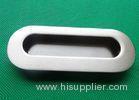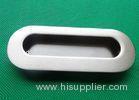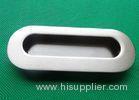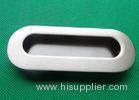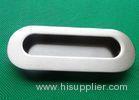
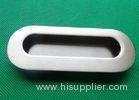
Pressure Zinc Die Casting Door Part With Chrome Plating Surface
| Place of Origin: | Zhejiang |
|---|
Company Profile
| Location: | Shenzhen, Guangdong, China (Mainland) |
|---|---|
| Business Type: | Manufacturer |
| Main Products: | Aluminum Alloy Die Casting, Zinc Alloy Die Casting, High Pressure Die Casting |
Product Detail
| Model No.: | NY-101 |
|---|
Product Description
Pressure Zinc Die Casting Door Part With Chrome Plating Surface
Quick Detail:
1. Good surface
2. Nice plating appearance
3. SGS report can be provide
4. Can make large part
5. Professional mold flow analysis
6. 100,000pcs be provided per month
Description:
Zinc die casting is a manufacturing process that can produce geometrically complex metal parts through the use of reusable molds, called dies. The die casting process involves the use of a furnace, metal, die casting machine, and die. The melted zinc in the furnace and then injected into the dies in the die casting machine.
Applications:
Furniture
Specifications:
|
Product name |
Product No. |
Material |
Dimension |
Weight |
Surface treatment |
|
chrome plating zinc die casting for door |
NY--101 |
ZINC3 |
7*3*2cm |
50g |
PLATING |
Competitive Advantage:
1. Can produce large parts
2. Can form complex shapes
3. High strength parts
4. Very good surface finish and accuracy
5. High production rate
6. Low labor cost
7. Scrap can be recycled
The process of zinc die casting:
The molten metal flows into a shot chamber through an inlet and a plunger, powered by hydraulic pressure, forces the molten metal through a gooseneck channel and into the die. Typical injection pressures for a hot chamber die casting machine are between 1000 and 5000 psi. After the molten metal has been injected into the die cavity, the plunger remains down, holding the pressure while the casting solidifies. After solidification, the hydraulic system retracts the plunger and the part can be ejected by the clamping unit. Prior to the injection of the molten metal, this unit closes and clamps the two halves of the die. When the die is attached to the die casting machine, each half is fixed to a large plate, called a platen. The front half of the die, called the cover die, is mounted to a stationary platen and aligns with the gooseneck channel. The rear half of the die, called the ejector die, is mounted to a movable platen, which slides along the tie bars. The hydraulically powered clamping unit actuates clamping bars that push this platen towards the cover die and exert enough pressure to keep it closed while the molten metal is injected. Following the solidification of the metal inside the die cavity, the clamping unit releases the die halves and simultaneously causes the ejection system to push the casting out of the open cavity. The die can then be closed for the next injection.


